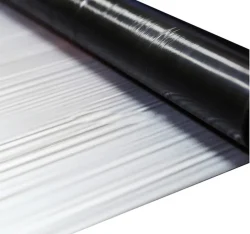Breakdown of soil and mulch
2023-11-28
Soil and mulch are fundamental elements in gardening, contributing to the health and well-being of plants by providing nutrients, improving water retention, and suppressing weeds. Here's a breakdown of soil and mulch:
Soil:
1. Topsoil:
- The upper layer of soil, rich in organic matter.
- Ideal for filling garden beds, planting, and lawn establishment.
2. Potting Mix:
- Specifically formulated for container gardening.
- Light and well-draining, often enriched with nutrients.
3. Garden Soil:
- Blended soil used for general garden purposes.
- May contain a mix of topsoil, compost, and other organic materials.
4. Compost:
- Decomposed organic matter that enhances soil fertility.
- Improves soil structure and provides essential nutrients to plants.
5. Manure:
- Animal waste, often from cows, horses, or chickens.
- Adds nutrients and improves soil structure.
- Should be well-aged or composted before use.
6. Perlite:
- Lightweight volcanic rock that improves soil aeration.
- Enhances drainage in potting mixes.
7. Vermiculite:
- A mineral that improves soil aeration and water retention.
- Often used in seed starting mixes.
8. Peat Moss:
- Partially decomposed sphagnum moss.
- Improves soil structure and water retention.
- Commonly used in potting mixes.
9. Sand:
- Adds drainage to heavy soils.
- Used in small quantities to prevent compaction.
10. Clay Soil Amendments:
- Gypsum or organic matter can be added to improve drainage in heavy clay soils.
11. pH Adjusters:
- Lime to raise soil pH and sulfur to lower it.
- Ensures the soil pH is suitable for the plants being grown.
Mulch:
1. Wood Chips:
- Made from shredded or chipped wood.
- Provides insulation, retains moisture, and suppresses weeds.
2. Straw:
- Dried stems of grain plants.
- Used to retain soil moisture and suppress weeds.
3. Bark Mulch:
- Shredded or chipped bark from various trees.
- Decorative, retains moisture, and regulates soil temperature.
4. Cocoa Bean Mulch:
- Made from cocoa shells.
- Adds a pleasant scent, retains moisture, and suppresses weeds.
5. Pine Needles:
- Fallen needles from pine trees.
- Acidic and suitable for acid-loving plants, excellent for suppressing weeds.
6. Gravel/Rock Mulch:
- Decorative and suitable for xeriscaping.
- Provides drainage and minimizes weed growth.
7. Leaves:
- Shredded or whole leaves from deciduous trees.
- Decompose over time, enriching the soil with organic matter.
8. Rubber Mulch:
- Made from recycled rubber tires.
- Long-lasting, doesn't decompose, and provides weed control.
9. Straw Mats or Landscape Fabric:
- Placed on the soil surface to suppress weeds.
- Allows water penetration while blocking sunlight.
10. Seashell Mulch:
- Crushed or whole seashells.
- Adds calcium to the soil and provides a decorative element.
11. Newspaper/Cardboard Mulch:
- Layers of newspaper or cardboard placed on the soil surface.
- Effective at suppressing weeds and decomposes over time.
Using the right soil and mulch is crucial for the success of your garden. Consider the specific needs of your plants, the local climate, and your gardening goals when choosing soil and mulch types. Regularly amending soil and replenishing mulch can contribute to the long-term health of your garden.



